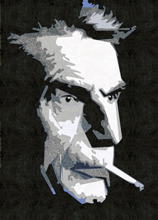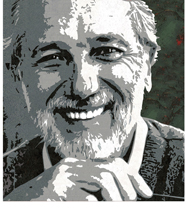![]()
|
||||||||
THE TRANSFORMATIVE POWER OF ART- PORTRAITS
United Nations Visitors Lobby, New York. June 2015
(double click on a thumb to enlarge it)
EFFIGIES Fabrizio Ruggiero’s 16 large portraits combine the ancient fresco technique with contemporary technology and depict thinkers and artists from all continents who contributed to the common good of humanity and stood up for the most vulnerable. (double click on a thumb to enlarge it) |
| Playing with sand, lime and mineral pigments, the basic elements in the art of fresco painting, Fabrizio Ruggiero pose questions on the essence of colour and on the meaning of the very act of painting in contemporary society. The structure and process of fresco painting are basic tools in his work that he developed using the most modern technology. Fabrizio Ruggiero's search search spread in various directions, always having the art of fresco painting as their source. One of these directions is close-up portraits, even though he prefers the word effigy to portrait, it conveys in a better way the idea of a symbolic image rather than a realistic one. |
|
|
 |
 |
 |